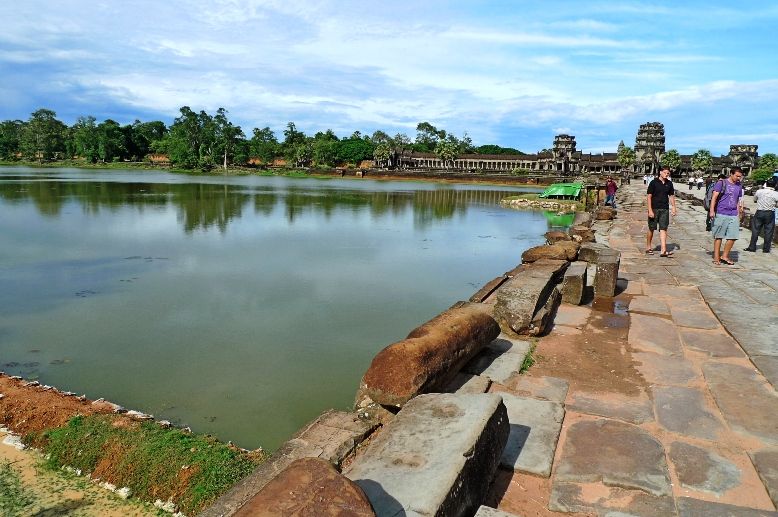
Located about 6km north of Siem Reap, Angkor Wat is surrounded by a moat 190 metres wide and an exterior wall measuring 1,300 metres by 1,500 metres.
After Jam, his friend and I left Bayon Temple, our driver Xiao He brought us to Angkor Wat. Walking across the causeway over the moat was quite an experience.
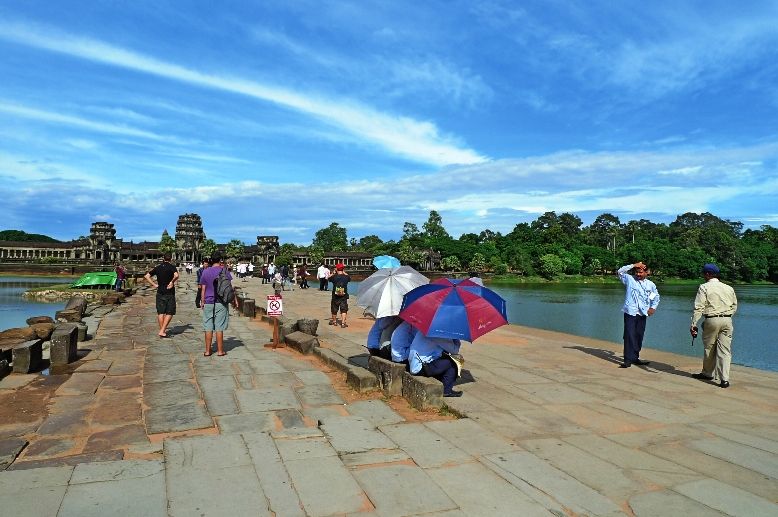
It was an awfully hot day. Look at those people sitting there with umbrellas!
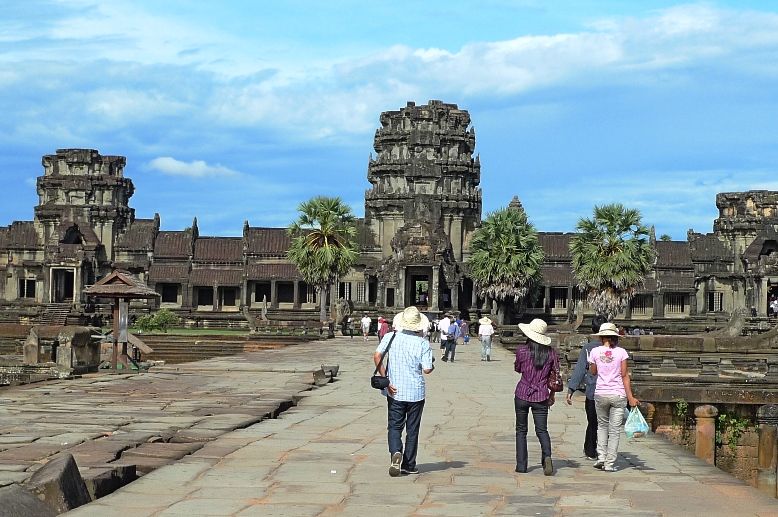
Most tourists were wearing hats. I was wearing a cap and had earlier lathered myself with generous amount of sun screen.
This is the main entrance into Angkor Wat, with a gopura structure on top.
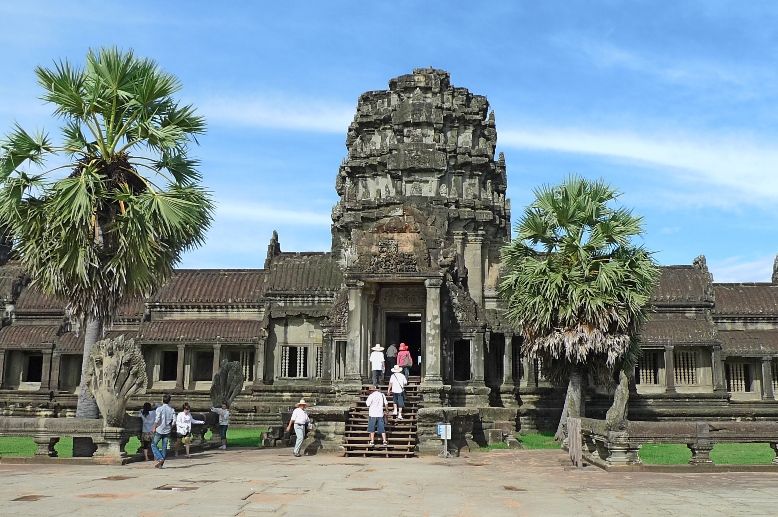
Unlike most Khmer temples, Angkor Wat is oriented to the West rather than the East. Scholars are divided as to the significance of this and the debate about it is still ongoing.
Can you see the nagas or seven-headed serpents flanking both sides of the entrance?
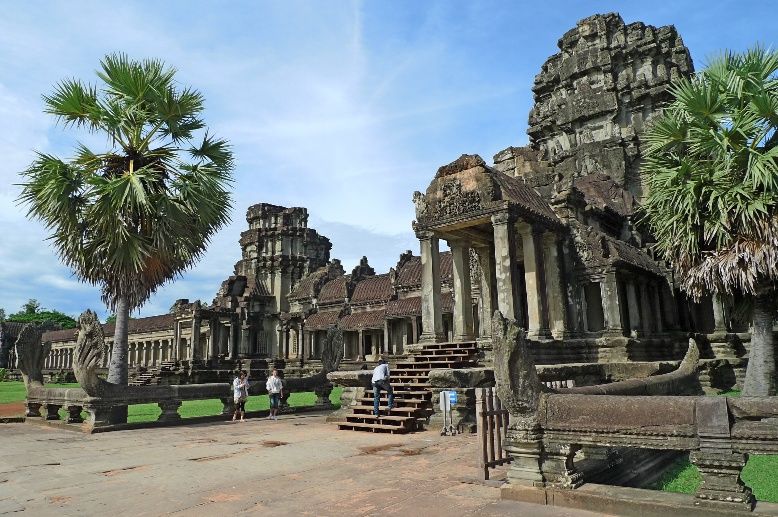
Here is a close shot of the naga, although it was quite deformed being exposed to nature for so many centuries.
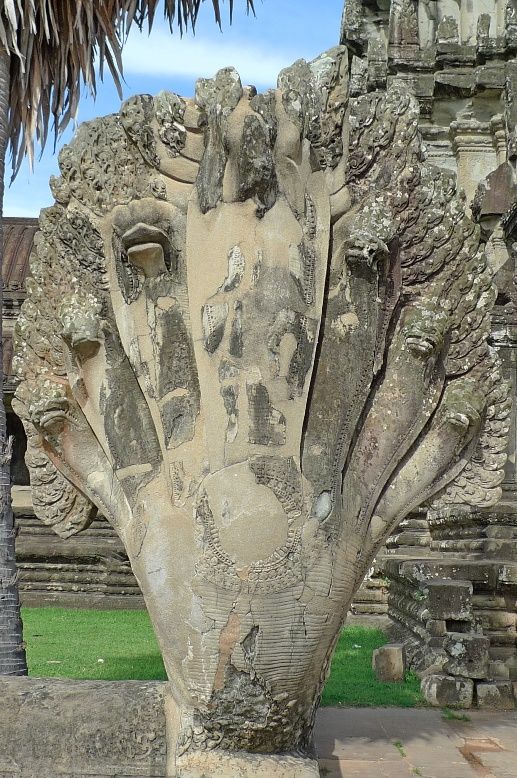
Built in the first half of the 12th century during the reign of King Suryavarman II, Angkor Wat was Khmer's state temple and capital city then. Many years after his death, a new king, Jayavarman VII established a new capital city called Angkor Thom and a new state temple called Bayon (which we visited earlier), a few kilometres to the north of Angkor Wat.

Angkor Wat was originally built to dedicate to the Hindu God Vishnu, but gradually moved from Hinduism to Thevarada Buddhism.
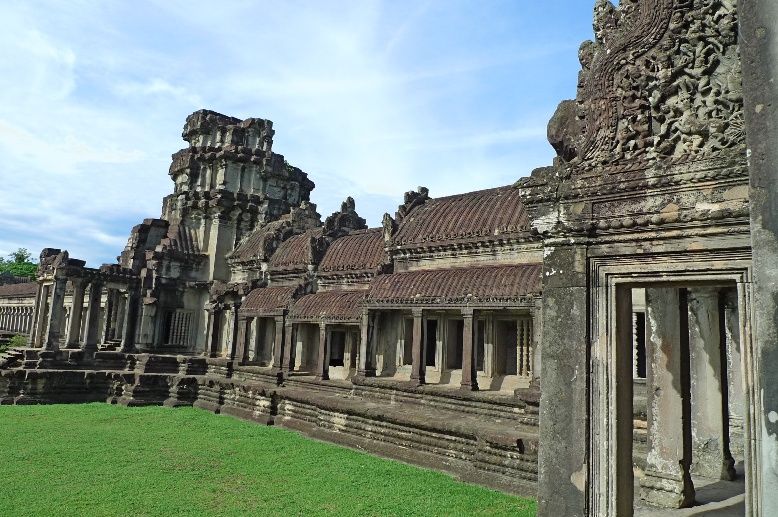
I took a few more shots outside before entering the gopura entrance.

Upon coming out on the other side, we could see a causeway leading towards the temple proper. The causeway is about 350 metres long.
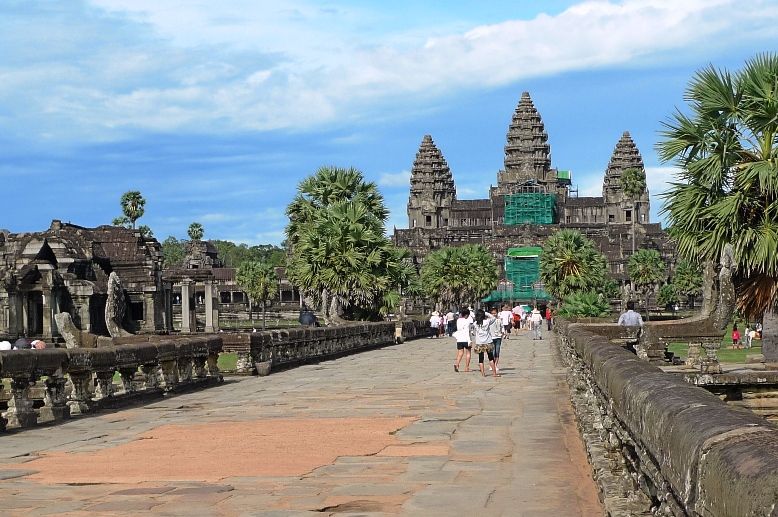
The Angkor Wat temple consists of three rectangular galleries rising to a central tower, with each level higher than the one before. Once we reached the temple, we were confronted with bas-reliefs that covered the exterior wall of the first level.
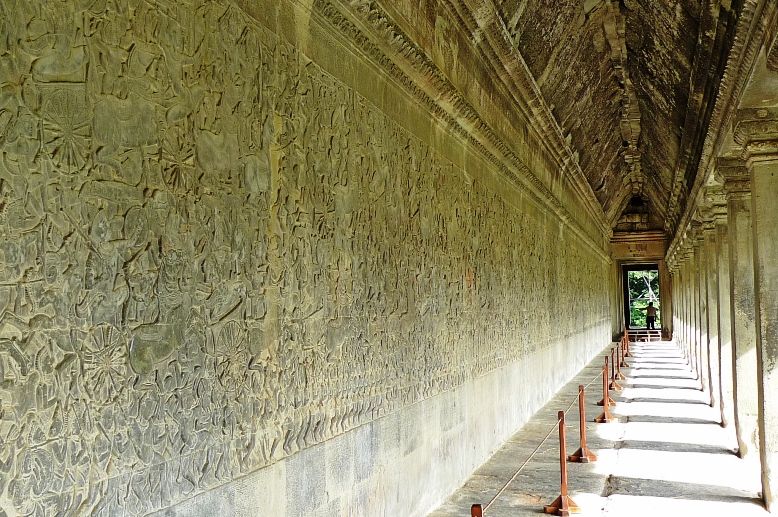
The amazing bas-reliefs depict scenes of mythological battles, Heaven and Hell and also the classic "Churning of the Ocean Milk". There are many stories to be told from all the bas-relief carvings and if you are really interested, you can hire a tour guide to explain them to you.
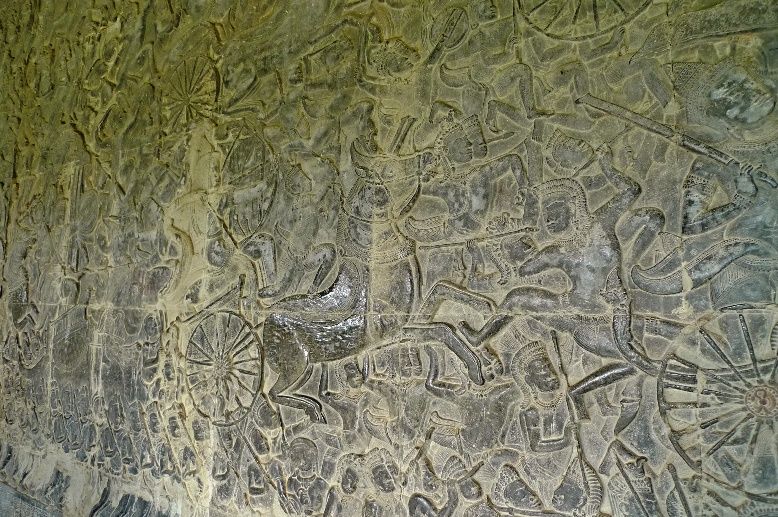
Here are photos of the second level.
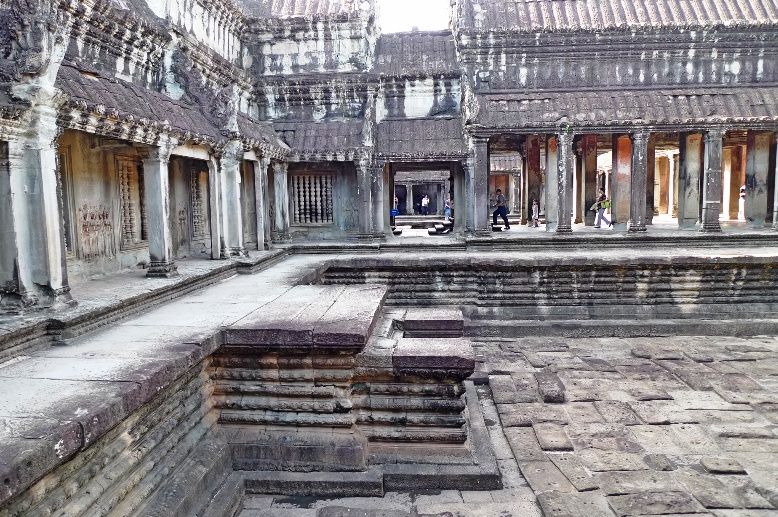
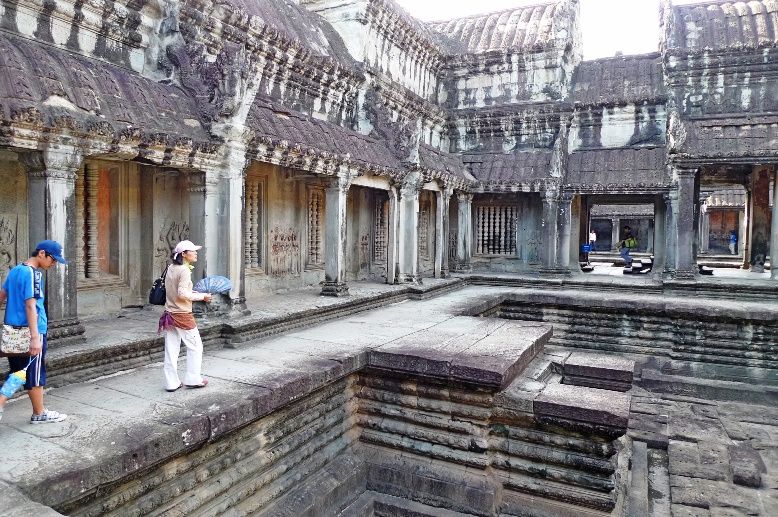
This enclosure was probably filled with water in ancient times to represent the ocean around Mount Meru, the sacred mountain of Buddhism and Hinduism.
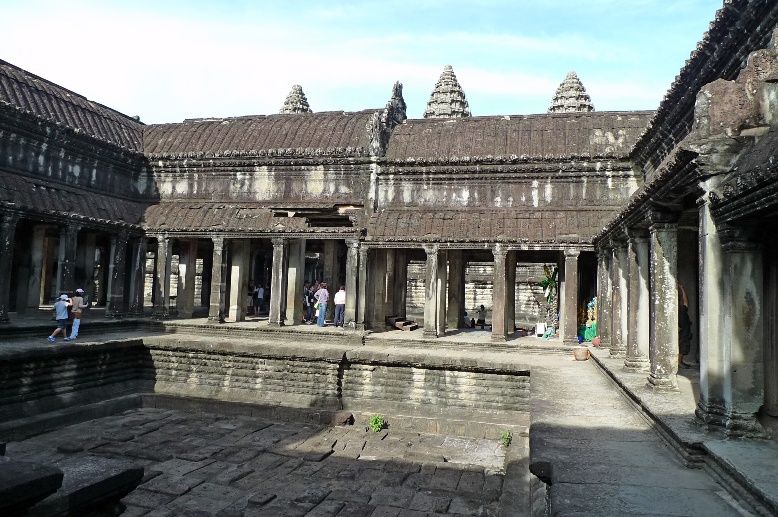
Or perhaps it was used as a bathing pool for the King? : )
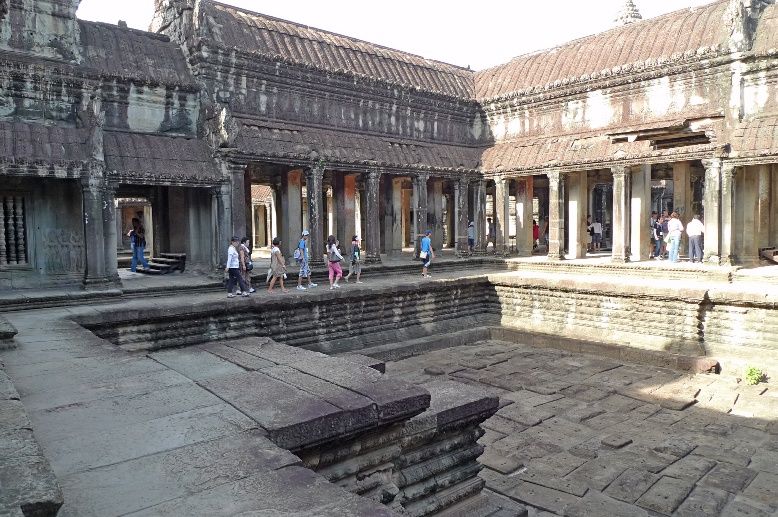
In any case, I found the architecture quite amazing.
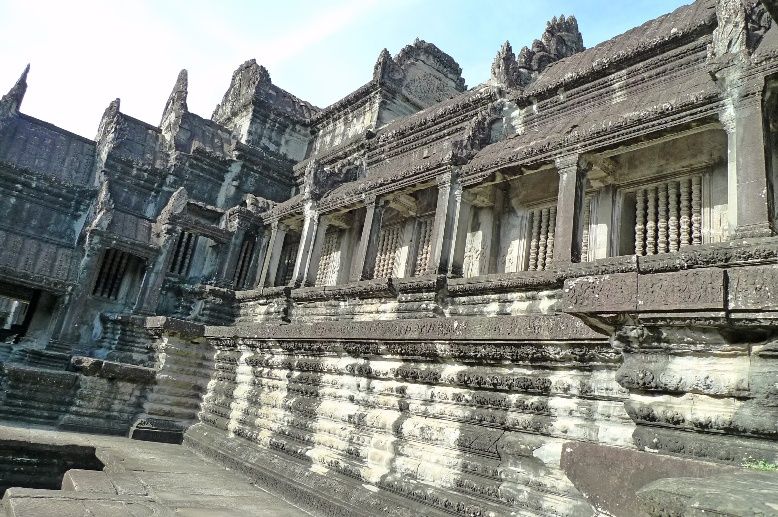
If you are an avid photographer of ancient buildings and architecture, you would love Angkor Wat!
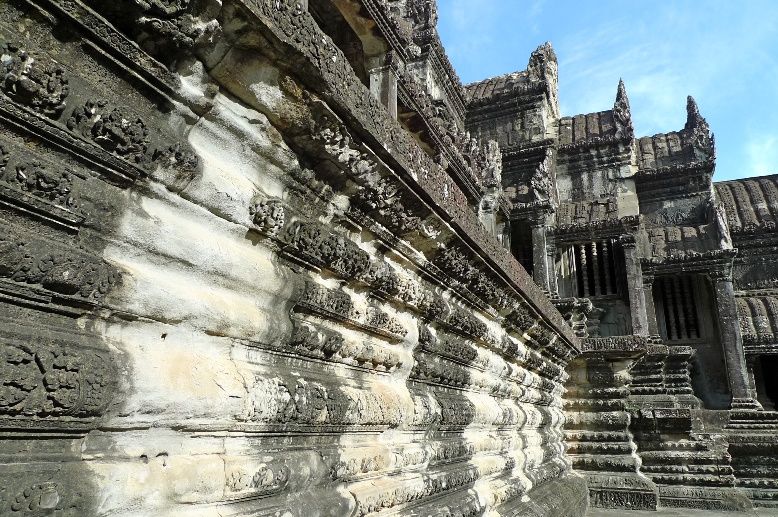
Walking through corridors, we soon reached the third level.
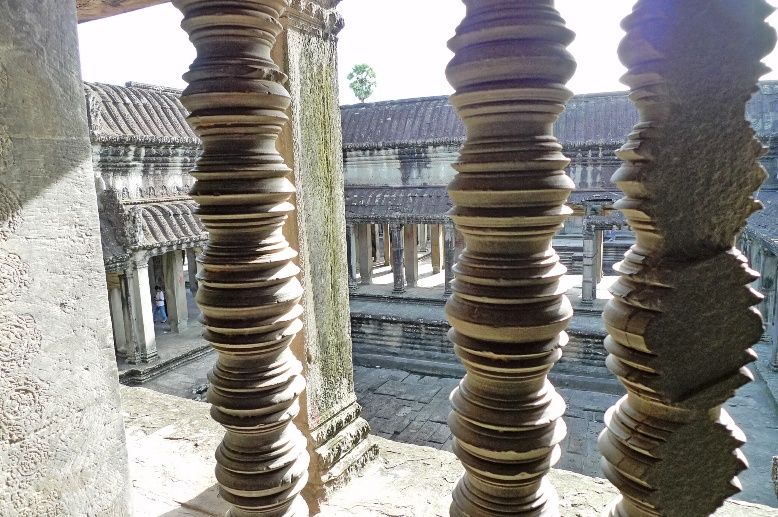
This is a miniature plan of Angkor Wat temple proper. The third level consists of a central tower flanked by four other towers to form a quincunx of towers.

Image courtesy of Wikipedia
The quincunx most probably represents the 5 peaks of Mount Meru.
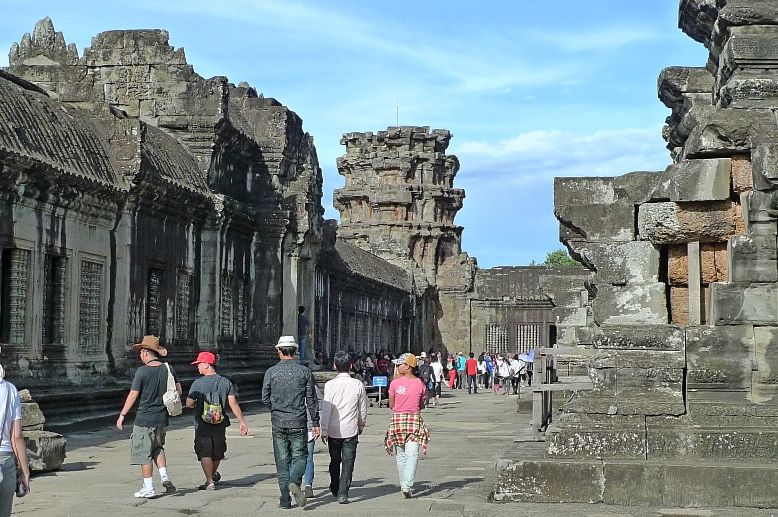
We were not allowed to access the central tower as it was under restoration.
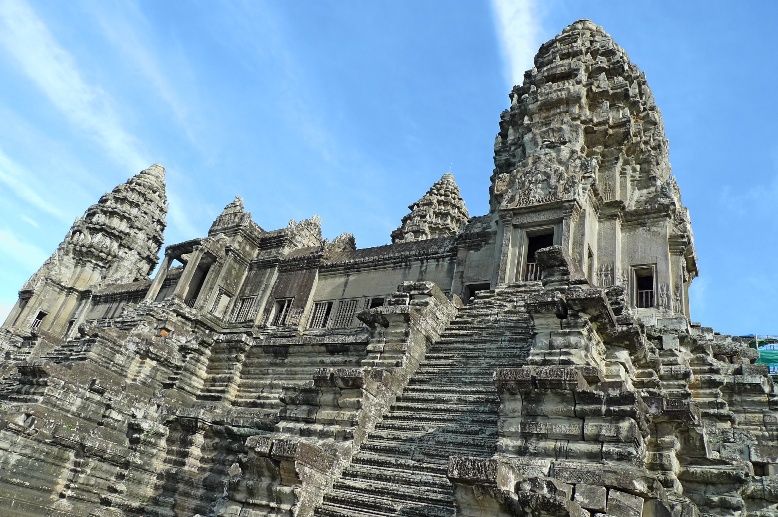
More photos of the towers and gopuras.
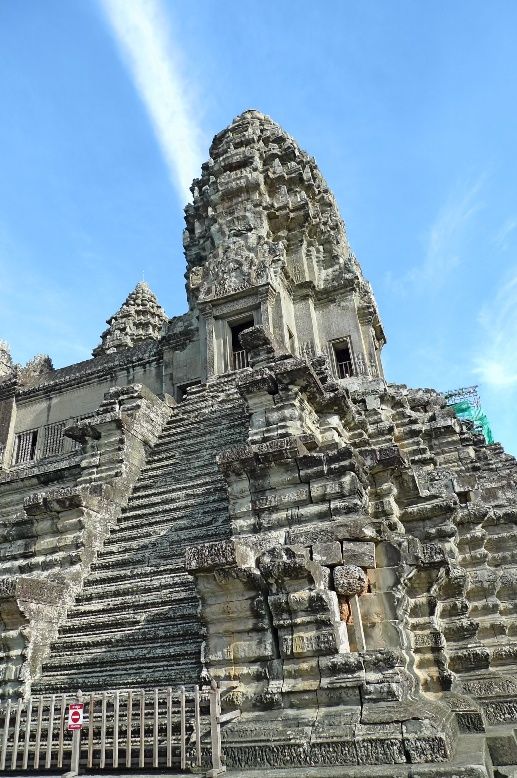
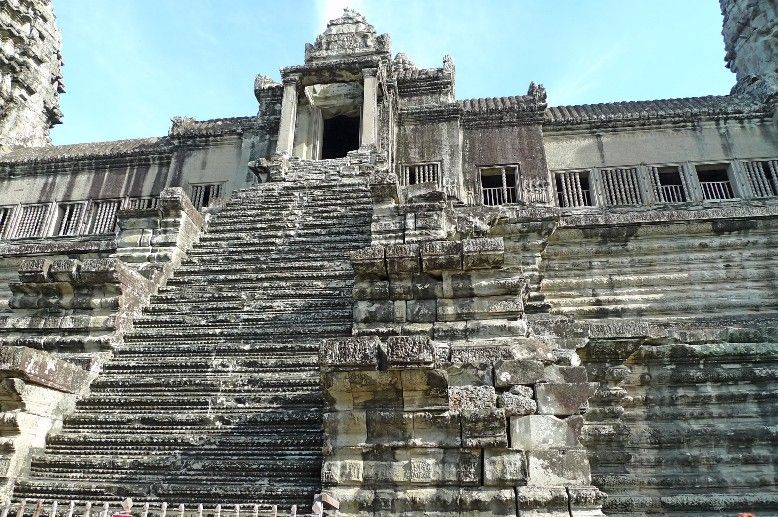
There were many devatas carved on the walls of the temple.

Look at those steep stairs going up to one of the towers! There was a long queue of people lining up so we did not ascend it. Perhaps I will try my luck next time!

I don't think my photos can fully illustrate the grandness of Angkor Wat. You simply have to be there to see it with your own eyes!
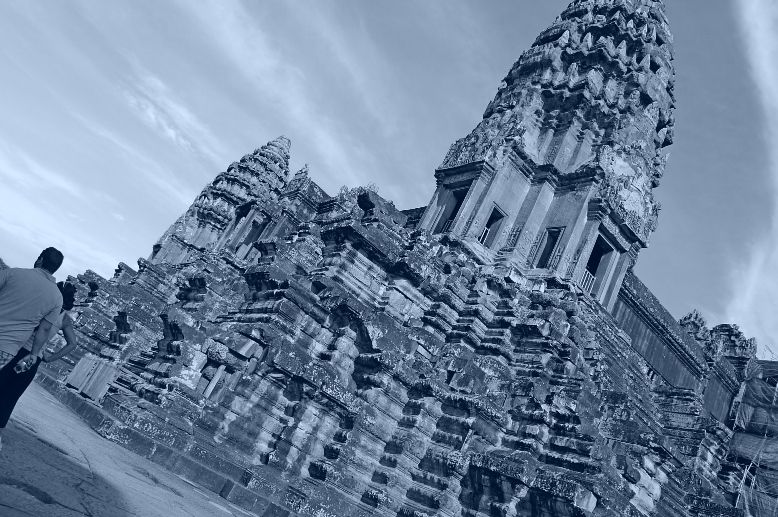
I was really amazed how those ancient people build Angkor Wat. It must have been a monumental task keeping in mind that there were no quarries in the area. The stones had to be brought in from Kulen Mountains some 50 kilometres away. They were presumably transported by raft along the Siem Reap river. Now how do you transport heavy stones on a raft without overturning it?

One modern engineer estimated that it would take 300 years to complete Angkor Wat today. Yet, it was constructed right after Suryavarman II came to the throne and completed shortly after his death - a period lasting no more than 40 years!
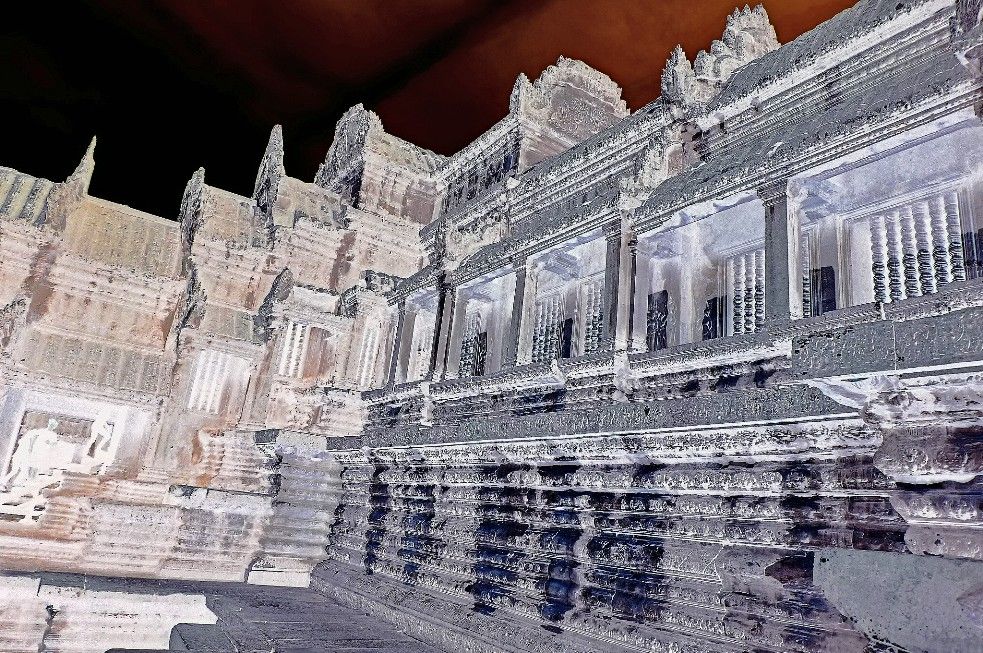
Looks like the way Angkor Wat was built is as mysterious as how the pyramids of Egypt were built!
Coming Up Next : Catching The Sunset At Phnom Bakheng

















































